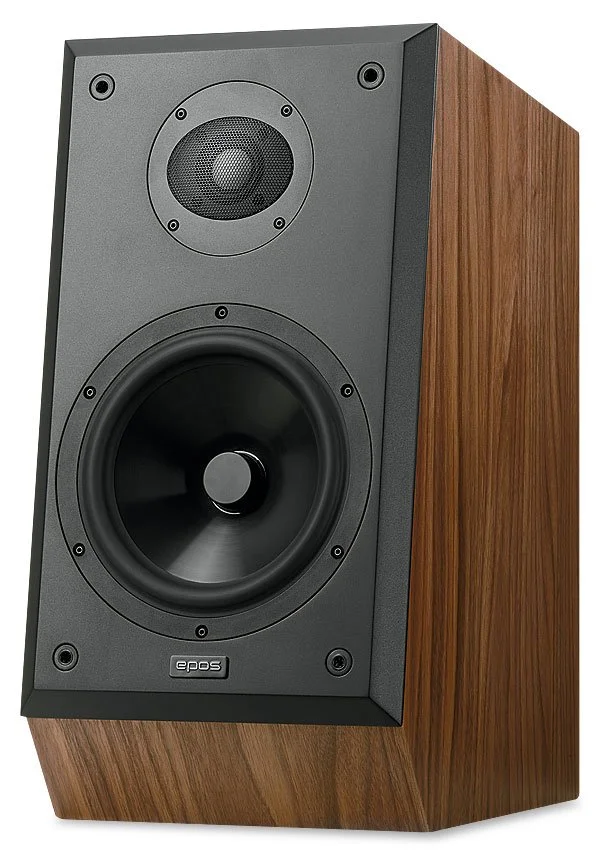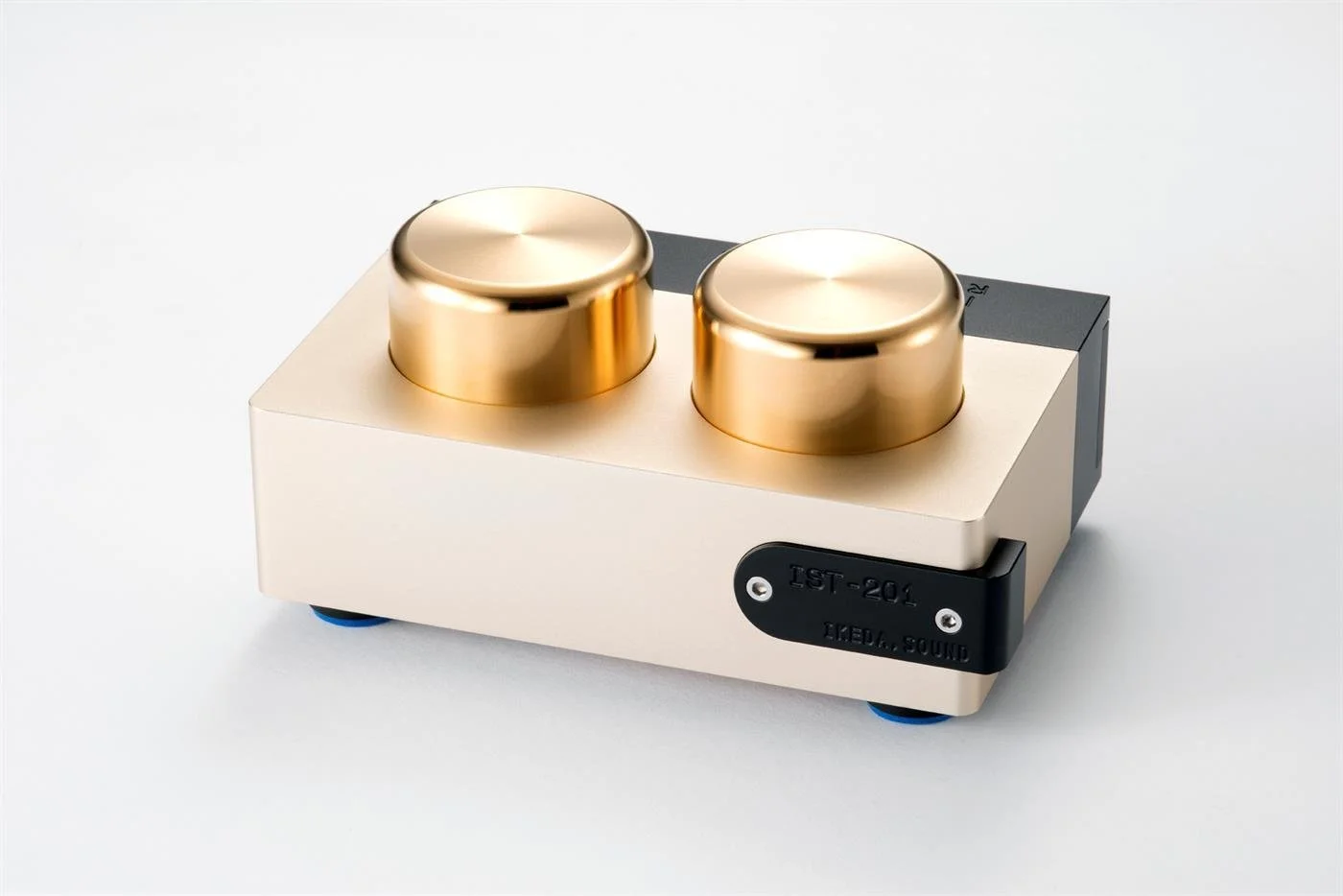Epos ES-14N Loudspeakers
Epos Loudspeakers was founded in 1983. After experiencing a bit of an ownership merry-go-round, it is now firmly in the hands of Germany’s “FinkTeam which is an adjunct to Europe’s premier loudspeaker design consultancy, Fink Audio Consulting. Fink Audio Consulting creates many speakers across a wide range of markets and prices.”
Founder Robin Marshall’s original sound design was retained even with a cross-section of ownership. The brand was always popular with audiophiles—nice aesthetics, good sound and excellent value. The speaker under review, the ES-14N, is a refresh of Marshall’s original ES-14 stand mount. New owners Fink Audio Consulting (Epos) is also filling out its line with a new design, the smaller ES-7N, and adding the recently debuted floor stander ES-28N.
The new ES-14N has the same design philosophy as the original but with all the benefits of modern-day speaker technology. As such, the new Epos is a two-way, ported design (rear) with a metal dome tweeter and polypropylene mid/bass cone. The new Epos sells for USD 4500/pair (stands included).
My Use
My review unit was in a special colour, a teal hue. Not my cup of tea. The standard walnut, black or white will suit most tastes, I would think.
I’d like to thank Bryan Taylor of The Gramophone for delivering the speakers to my home in Victoria. Taylor also delivered the heavy, substantial ES-14N dedicated stands. They brought the speaker’s tweeter to ear level and did a good job of accommodating the slight angle at the bottom of the baffle.
The speakers were already broken in (about 200 hours). I angled them in 10 degrees and let the music play. A few feet from the side and rear walls did the trick. The speakers are very easy to dial in. The supplied speaker covers went unused.
My reference system was in play for the audition. The USD 4500/pair (stands included) were in an expensive playground. They enjoyed their time there. Even though the speakers are not an outrageous price, best to feed them with good ancillaries. And when I changed the cabling from Ansuz Acoustics $$$$$ to Allnic Audio $$$, the speaker’s excellent voicing took the changes in its stride. It also enjoyed CDs as much as vinyl
Specifications
Frequency Response: 40Hz – 23kHz (-6dB) 33Hz – 25kHz (-10dB)
Average Impedance: > 6 Ohm
Minimum Impedance: 4.3 Ohm @ 160Hz
Sensitivity: 87dB
Distortion: 0.2% THD @ 1W
Crossover Frequency: 2700 Hz
Bass Unit: High Power 7“, 35 mm voice coil diameter, Hybrid Ferrite and Neodymium magnet, injection moulded cone with variable thickness and Mica filling. Low hysteresis rubber surround.
HF Unit: 28 mm tweeter with Aluminum/Ceramic compound dome and no Ferrofluid
Dimensions: 491 x 250 x 385 mm (HWD). Stand: recommended height 515 mm
Weight: 16 kg without stand
Finish: Walnut, White semi-matte, Black semi-matte
Cabinet: Reflex loaded, damped Sandwich panels, one-dimensional braces, Low Noise Port, Duo Frontpanel
Terminal: German-made Low Metal Mass 4 mm Banana terminal
Reading the specifications, the 14N is a high-spec unit utilizing the top speaker tech of today including a straightforward crossover, ingenious cabinet design (damped sandwich panels, one-dimensional bracing and the angled baffle) and the addition of mica to the woofer driver for stamina and punch—this was heard to great effect on high energy material. Both drivers are proprietary new designs. The 28 mm tweeter’s dome is made from a ceramic-coated aluminum alloy to improve stiffness. The tweeter’s performance is further enhanced by the use of a ferrite magnet, said to improve linearity. Their hypothesis was proved many times during listening. The tweeter is an effortless sounding delight adding much to the overall balance of the speaker’s sound. Further, the sloped baffle is not just for aesthetics (divided opinion on this one chez nous). Good designers are always finding ways to help with the time alignment of the drivers and reduce internal standing waves. Success.
Sound
The overall sound was coherent between all octaves and presented instrumental and vocal timbres naturally. Already a win in my book. The dynamics were punchy and effective in that fff dynamics did not implode the soundstage. The speakers could play very loud without too much loss of focus. So “Immigrant Song” from Led Zeppelin III was a cool surprise. I had expectations of many who consider English speakers polite; they were not met while listening to the torrents of quality, focused sound the ES-14N produced.
During the days filming my latest video, I had cause to listen to many DG recordings of chamber music, several absolute knockouts. The Epos was a good reviewing partner. I could decipher all the complex inner lines of Beethoven’s later quartets and Schubert’s famous Death and the Maiden quartet. All the string timbers were very lifelike and when resiny bows met gut/metal strings, the 14Ns told the quartet’s story.
The new Impex ISTEP of Jennifer Warnes’ Famous Blue Raincoat: The Songs of Leonard Cohen is a superb remaster by Bernie Grundman from analog tapes but from the original digital recording. It’s a gem and the great lady’s voice is heard beautifully in the soundstage with clear diction and her musical intent heard. Outstanding backing musicians, too, and sounding brilliant through the Epos speakers.
And when things get very quiet, once again soundstage and imaging are maintained. Thus loud, soft or mezzo forte, the Epos speakers are very inviting.
Once in a while, on specific material, the treble got a bit tizzy, usually piano CD recordings such as my friend Beth Levin’s powerful new CD Phantasmata with mainstream repertoire by Liszt and Mussorgsky. During the “Ballet of the Unhatched Chicks’ from Mussorgsky’s Pictures at an Exhibition, some of the complicated fast high treble runs caused a little confusion, but it was fleeting. And rare.
In general, the overall tonal display was on the warmer side of neutral. This helped with the treble energy just mentioned, but the full power of the symphony orchestra sounded detailed with a lovely glow around well-recorded material. And on newly remastered all analogue LPs like the new DG Original Source Emil Gilels Beethoven Sonatas, ringing treble notes as in the opening of the Les Adieux Sonata were completely under control. And the Epos’ excellence at deciphering complex passages was on full show during Beethoven’s very complex contrapuntal passages.
Comparisons
Where the Epos fall short compared to other much more expensive speakers, is the ultimate refinement of sound and the ability to hear the emotional intent of the artist. In my experience, you have to pay Wilson, Rockport or Børresen bucks for this ultimate playback! So, a little common sense, here. The Epos pair are $4500 with stands. In today’s terms at a reasonable price, you are getting well above average performance.
Conclusion
Thus, a very warm recommendation from me. Most people, even ardent audiophiles can’t push to afford super speakers, so, in the real world these resolving, powerful speakers are a very good value at $4500/pair (stands incl.) No matter the genres you listen to, the Epos ES-14N can do the job efficiently and musically. Before making any buying decisions based on reviews, marketing, expectations, etc, schedule an audition with your favourite records and CDs. I think you’ll be very impressed.
Further information: Epos Loudspeakers













